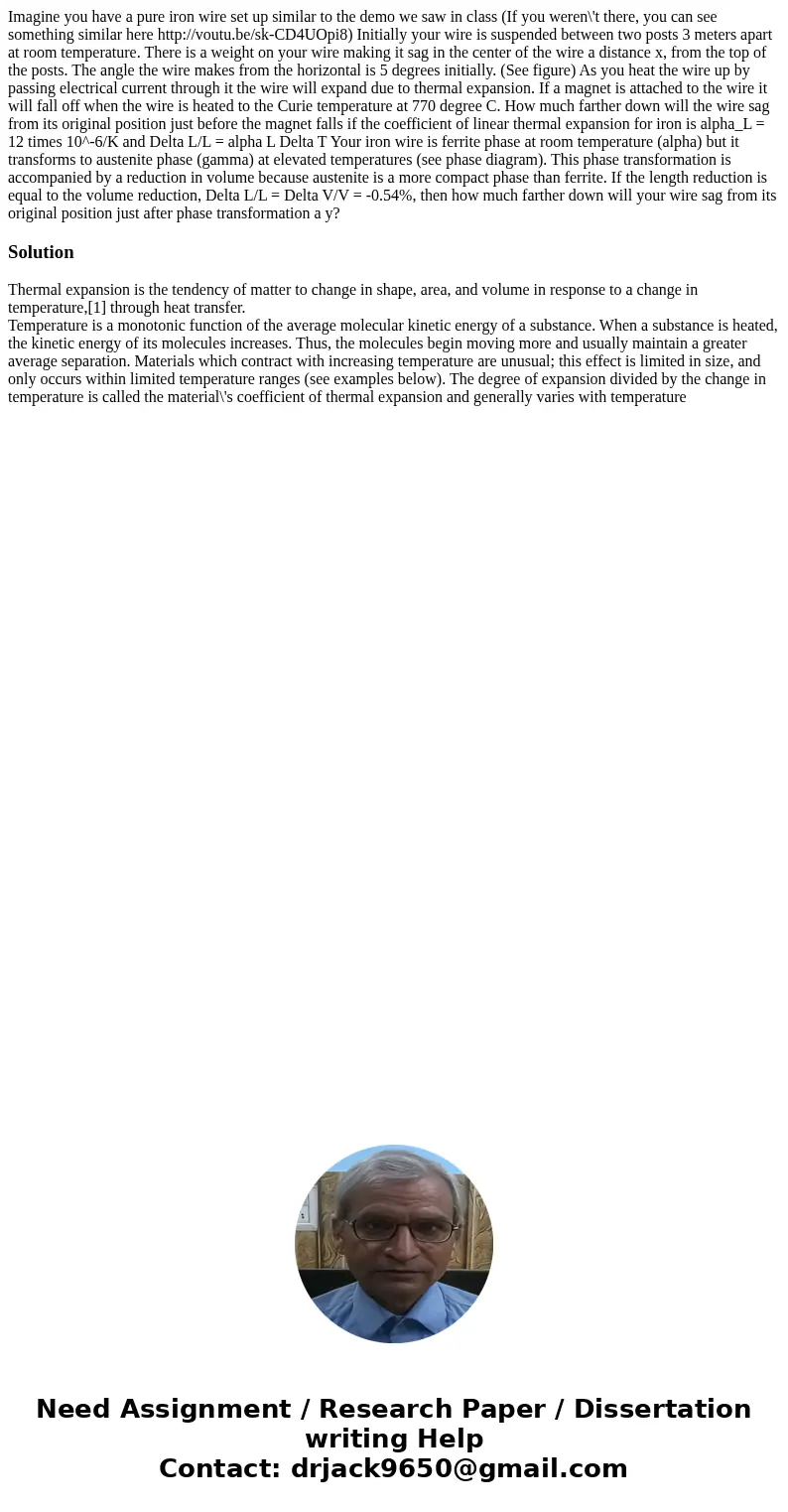Imagine you have a pure iron wire set up similar to the demo
Imagine you have a pure iron wire set up similar to the demo we saw in class (If you weren\'t there, you can see something similar here http://voutu.be/sk-CD4UOpi8) Initially your wire is suspended between two posts 3 meters apart at room temperature. There is a weight on your wire making it sag in the center of the wire a distance x, from the top of the posts. The angle the wire makes from the horizontal is 5 degrees initially. (See figure) As you heat the wire up by passing electrical current through it the wire will expand due to thermal expansion. If a magnet is attached to the wire it will fall off when the wire is heated to the Curie temperature at 770 degree C. How much farther down will the wire sag from its original position just before the magnet falls if the coefficient of linear thermal expansion for iron is alpha_L = 12 times 10^-6/K and Delta L/L = alpha L Delta T Your iron wire is ferrite phase at room temperature (alpha) but it transforms to austenite phase (gamma) at elevated temperatures (see phase diagram). This phase transformation is accompanied by a reduction in volume because austenite is a more compact phase than ferrite. If the length reduction is equal to the volume reduction, Delta L/L = Delta V/V = -0.54%, then how much farther down will your wire sag from its original position just after phase transformation a y? 
Solution
Thermal expansion is the tendency of matter to change in shape, area, and volume in response to a change in temperature,[1] through heat transfer.
Temperature is a monotonic function of the average molecular kinetic energy of a substance. When a substance is heated, the kinetic energy of its molecules increases. Thus, the molecules begin moving more and usually maintain a greater average separation. Materials which contract with increasing temperature are unusual; this effect is limited in size, and only occurs within limited temperature ranges (see examples below). The degree of expansion divided by the change in temperature is called the material\'s coefficient of thermal expansion and generally varies with temperature

 Homework Sourse
Homework Sourse